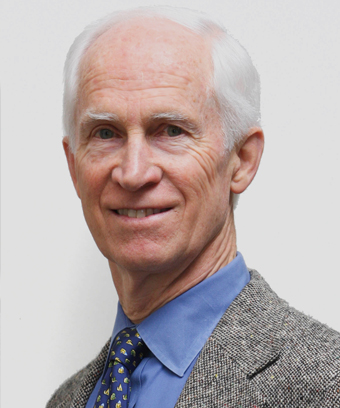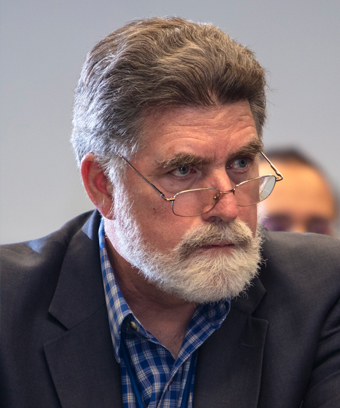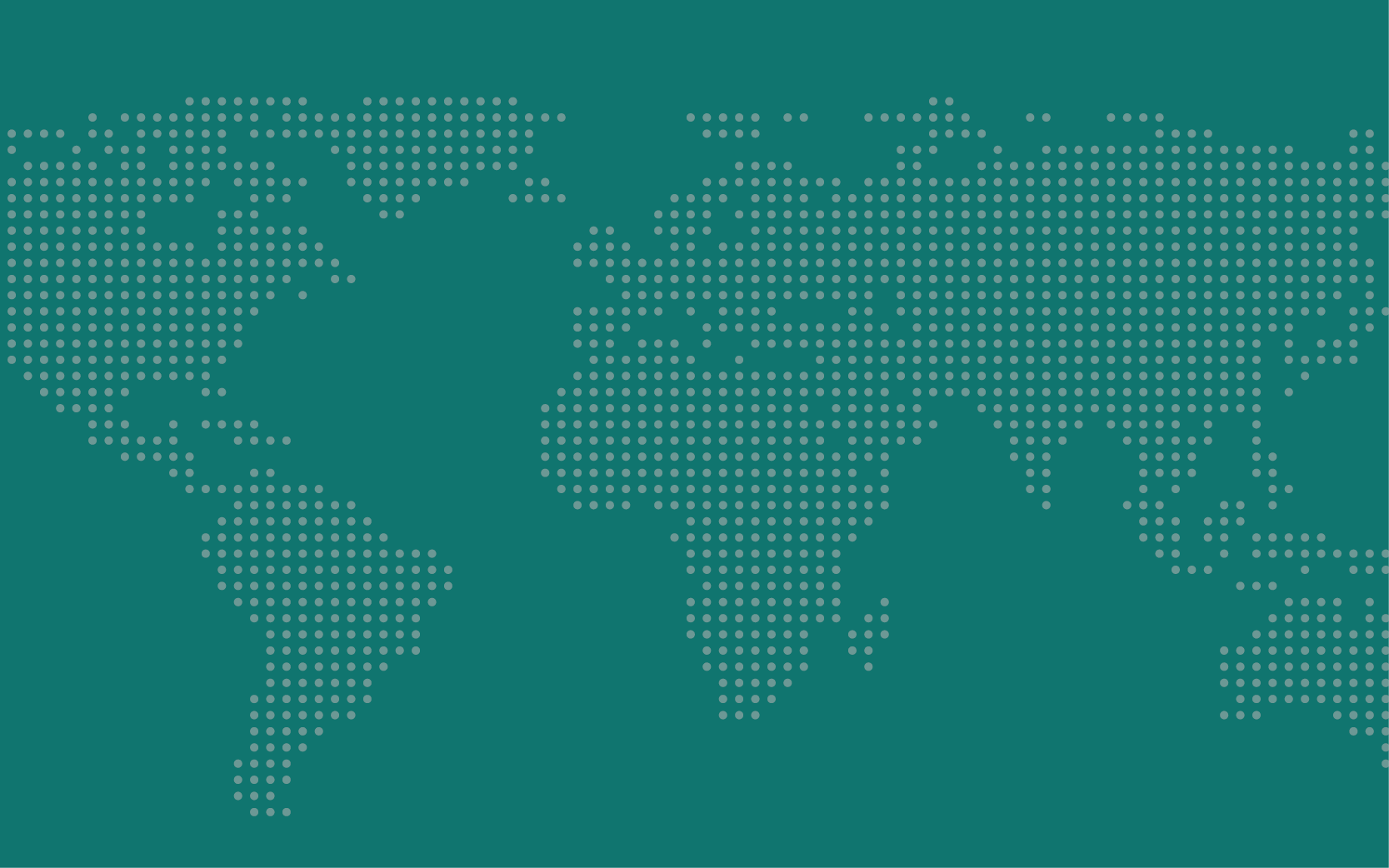Implications of COVID-19 for Global (In)Stability
Is the COVID-19 crisis comparable to any other crisis in history? What are the biggest dangers ahead? And what should be the role of the state and international organizations in responding? Experts from across the Institute on Global Conflict and Cooperation weigh in.

Courtenay R. Monroe, UC Merced
As a scholar of state repression, I worry about the implications of the COVID-19 pandemic for government violence.
Governments are well-known to violate citizen rights during and following natural disasters, and this appears to be no exception. Reports of physical violence are increasingly commonplace as police officers enforce government lockdowns. Several countries—including democracies—have militarized their police forces and allowed their militaries to operate domestically. Such militarization is rarely linked to increases in public safety and is often employed more harshly against marginalized individuals.
Other countries—again, including democracies—have used the pandemic as a rationale for issuing executive decrees, pushing through legislation to expand unilateral powers, and limiting the reach of previously independent courts.
… encroachments on individual rights—well-justified as they may be during an emergency—often linger well after an emergency ends, and it is especially difficult to stop extant rights violations when they are directed at marginalized individuals.
Governments are frequently on solid legal ground to limit civil liberties, militarize, and violate individual rights when faced with an emergency like COVID-19. Domestic law often allows for such action during exceptional circumstances, and much of international human rights law is derogable under emergency conditions. But encroachments on individual rights—well-justified as they may be during an emergency—often linger well after an emergency ends, and it is especially difficult to stop extant rights violations when they are directed at marginalized individuals. When the “majority” sees the government as protecting them from particular individuals—because of their race/ethnicity, their sex/gender, their political affiliation, or their preferences about wearing a mask—government violations of human rights can be particularly persistent.

Richard Madsen, UC San Diego
Recently reading Camus’s The Plague, I’ve been impressed from a sociological perspective by how many details of this classic novel correspond to the present COVID-19 crisis: initial denial, awareness of the problem by medical personnel but attempts to minimize by government officials, initial panicked solidarity when quarantine has to be imposed but later attempts to evade and resist, talk of “flattening the curve,” physical and psychological exhaustion of health care workers. This pandemic is certainly not unique in human history.
Yet certain aspects of the crisis do seem unique to the current system of global interdependence. The coronavirus is inflaming the preconditions of economic, political, and cultural tension that are currently afflicting that system, particularly tensions among science, politics, economics, and religion—the ligaments that tie the system together in patterns of cooperation and conflict.
The global economy was already arousing resentments because of the inequalities it was fostering within nations and the disproportionate affliction of the virus on the poor will probably intensify these resentments.
There is a global scientific community whose members generally espouse universal values of research integrity and international cooperation. At least initially, the government in China suppressed the findings of such scientists, a tragic example being the case of Dr. Li Wenliang. But in the U.S., too, there is tension between the Trump administration and its scientists, and also tension with WHO scientists who are allegedly compromised by politics. Such political tensions undermine global trust in both science and governments. Meanwhile geopolitical tensions are exacerbated by the impulses toward nationalism engaged in by leaders seeking to rally their populations both to defend against the virus and to protect their power, and this comes into tension with an open market economy. The global economy was already arousing resentments because of the inequalities it was fostering within nations and the disproportionate affliction of the virus on the poor will probably intensify these resentments.
Finally the virus increases tensions between world religious leaders who see the crisis as a call to direct their followers toward ecumenical care and solidary and those who would call for a purification of their communities under the judgment of God. An example of this can be seen in the harsh criticism of some Catholic traditionalists toward Pope Francis for participating in an interfaith ecumenical prayer service for deliverance from the pandemic.
The virus is therefore straining to the breaking point many strands of an already weakened global fabric. One good thing that could come out of it would be new awareness of the necessity to repair those stands—especially before they are afflicted by even more severe strains caused by global climate change.

Tai Ming Cheung, UC San Diego
As a security specialist focusing on the intersection between political economy, innovation, national security, and the role of the state, the COVID-19 pandemic shines a bright light on the strengths, weaknesses, and underlying pathologies of national responses. The two countries that I pay particular attention to is the U.S. and China and for the sake of brevity I will concentrate on just a couple of what I think are the most important developments that have so far emerged from this crisis:
The top-down statist approach of the Chinese party-state, … allowed China to use draconian measures to contain the outbreak … as it threatened to spread throughout the country. By contrast, the U.S. has taken a more patch-work bottom-up anti-statist approach that has been less effective in containing the spread of the new coronavirus.
The top-down statist approach of the Chinese party-state, especially emphasizing the hands-on role of its top leader Xi Jinping. This allowed China to use draconian measures to contain the outbreak to a relatively limited area—Wuhan and Hubei—just as it threatened to spread throughout the country. By contrast, the U.S. has taken a more patch-work bottom-up anti-statist approach that has been less effective in containing the spread of the new coronavirus. Of course, the overall costs are still to be counted. On the human health dimension, China has been able to keep its death and infection rates down—although the reliability of its statistics is open to considerable doubt—while the U.S. is paying a heavy price. The economic costs to both countries have been high, although how high will not be clear until later this year. Diplomatically, the U.S. has virtually ceded the international space to China, who has been keen to claim international leadership although this has been tarnished by assertive Chinese behavior.
Crises attenuate critical underlying trends in relationships, and the COVID-19 crisis has accelerated the breakdown in trust between Washington and Beijing, deepened their ideological and populist contempt for each other, and further weakened the economic and social ties that had ensured that the two countries remained deeply engaged with each other even as geo-political, technological, and geo-economic competition intensified. So, while thee COVID-19 crisis did not ignite the already worsening U.S.-China relationship, it may have been the straw to finally break the camel’s back, and lead to out-and-out Cold War confrontation.

Esteban F. Klor, The Hebrew University of Jerusalem
As the COVID-19 epicenter moves to the southern hemisphere, it creates a new challenge to international organizations. A sizable share of the work force in developed countries was able to work from home despite national lockdowns implemented to cope with the virus. And those who weren’t able to work were, at least partially, supported by taxpayers. On the contrary, few individuals in poor and middle-income countries can work from home. And if these individuals don’t work, they don’t receive a salary and they can’t afford to buy food for themselves and for their families. Their governments are unable to provide them with any meaningful help since they have limited resources and limited access to credit markets.
The substantial economic impact of the pandemic on the working poor in developed countries will be exacerbated in developing and poor countries in the southern hemisphere, leading to a significant increase in extreme poverty.
The substantial economic impact of the pandemic on the working poor in developed countries will be exacerbated in developing and poor countries in the southern hemisphere, leading to a significant increase in extreme poverty. To avoid overwhelming their precarious healthcare systems, poor countries are imposing stringent and lengthy lockdowns. Since they don’t have the capabilities to conduct comprehensive and coordinated coronavirus testing, these lockdowns are imposed nation-wide instead of being targeted to the infected population. Argentina, for example, imposed a lockdown on March 21 that is still in place. At the same time, the country went into default and is currently negotiating with its creditors to reschedule the payment of its liabilities.
This is happening in the midst of a global recession caused by the pandemic. Understandably, rich countries will be reticent to provide help as their economies are shrinking and their unemployment rates skyrocket.
Yet, international organizations have to stress the fact that poor countries need immediate help from rich countries. If they don’t receive any help, the devastating effects of COVID-19 on the poor populations of low- and middle-income countries will have long-lasting effects. As we recover from the virus and return to a more globalized world, the increasing number of poor individuals in the southern hemisphere may have a negative impact on developed countries. Crime, violence, and political instability are likely to increase in these countries, leading to migration pressure and a decrease in the availability of the regions’ natural resources.

Gerard Padró i Miquel, Yale University
When I think about the consequences of COVID-19 for conflict and political violence, two dimensions of impact, one internal and the other across states, worry me the most.
The internal politics of many countries are being upended by COVID-19. The need to control the movement of citizens, together with the feeling that such a deep crisis needs strong and agile leadership generate pressure towards weakening of civil rights and control over executive branches. Governments from Hungary to Sri Lanka are seizing this opportunity to consolidate control, erode freedom of the press, and weaken checks and balances, such as they existed. Repression can stem conflict in the very short run, but it bodes poorly for the future, as social pressure finds limited and waning outlets for expression. This illiberal trend was a pre-existing condition that is being exacerbated by the pandemic.
At the international level, the picture is similar. The global leadership traditionally espoused by the U.S. has been lacking for a while, but this shock has shown that the leadership vacuum is extremely costly, particularly at a time where everyone’s concerns turn inwards. The pre-existing tendency towards reversing growth in the international flows of goods, capital, and people is gathering pace. This will slow down economic growth for a long period to come, thus increasing governments’ search for other sources of legitimacy. I am afraid we will continue to see a rise in nationalism which bodes poorly for international relations.

T. J. Pempel, UC Berkeley
When the SARS epidemic broke out in 2003, the U.S. and China cooperated in their response. The U.S. provided considerable assistance to offset China’s weaker national health capacity. Bilateral and regional collaboration and capacity building deepened on global health issues that in turn served the world well when the “swine flu” emerged in 2009.
American and Chinese reactions to COVID-19 pandemic contrasted sharply. Cooperation vanished as leaders in both countries weaponized the outbreak. China did so from a position of strength and multilateral cooperation, while the U.S. fumbled in self-inflicted isolated feebleness.
American and Chinese reactions to COVID-19 pandemic contrasted sharply. Cooperation vanished as leaders in both countries weaponized the outbreak. China did so from a position of strength and multilateral cooperation, while the U.S. fumbled in self-inflicted isolated feebleness.
After local Chinese officials blundered when the virus first appeared, the central government flexed its authoritarian muscles, dispatching over 40,000 medical staff and huge quantities of medical supplies, erecting two large temporary hospitals, and imposing strict social distancing policies nationwide. It updated the World Health Organization (WHO) and the United States on the crisis, shared the gene sequence of COVID-19 and agreed to the WHO’s request to send investigators to China.
At the same time, Beijing spread conspiracy theories blaming foreigners for the outbreak while it used the pandemic to burnish its global image. It sent experts and protective equipment to other affected countries; boosted Chinese contributions to the WHO; and mobilized its diplomats to tout the idea that other countries could learn from the Chinese governing system that was responsible for its rapid and effective response to the crisis. Not at all coincidentally, it used global attention to the pandemic to distract from a crackdown on democracy movement in Hong Kong.
In stark contrast, for eight weeks, the White House ignored the outbreak and the warnings of scientists. Over its three years in office, the Trump administration had systematically decimated the country’s scientific, health care, and diplomatic apparatus; run down stockpiles of protective equipment; and disdained technical expertise, all as part of a coordinated assault on state effectiveness. As the virus ravaged the country, Trump ignored health warnings to hold several massive campaign rallies; lied about the availability of testing and protective equipment; and touted his own favored remedies. When his administration finally acted, it refused available WHO tests; insisted that states, not the federal government, lead the response; encouraged citizens to “liberate” their states from CDC-inspired shutdowns; sought to brand COVID-19 as “the Wuhan virus;” advanced its own conspiracy theory that the virus had escaped from a secret Chinese laboratory; and cut funding for the WHO.
Not surprisingly, confirmed cases in China are roughly 83,000 with fewer than 5,000 deaths. This compares to 1.6 million cases and nearly 95,000 deaths [at the time of this writing] in the U.S. It seems clear which country will be the greatest beneficiary of their responses.

Brad Roberts, Center for Global Security Research
My particular focus is on the impact of the pandemic on the likelihood of conflict involving the United States. Some observers draw the conclusion that the pandemic “changes everything”—that it has revealed a national security strategy focused on old problems and unresponsive to the real new threats. In this I am reminded of the arguments made after 9/11, when it was common to hear pundits argue that the old focus on state-on-state conflict had to give way to the new problem of non-state violence. It was certainly the case then, as it is now, that a new challenge required our attention. But we set aside a focus on state-on-state conflict at our peril.
… the institutions and norms that have helped stabilize and, to an extent, pacify the international system since World War II are in retreat. This raises a significant question about whether the demise of the “liberal international order” will be peaceful or violent.
In retrospect, it is clear that, while the United States put its focus on al Qaeda and counter-insurgencies in Afghanistan and Iraq, the leaders of Russia, China, and North Korea put their focus on the United States. The leaders of Russia and China are now clear about their opposition to the U.S.-led regional orders in Europe and East Asia and are pushing hard, with “gray zone” strategies, to re-make those orders. The leader of North Korea, too, is gathering the capabilities to try to secure a settlement of the Korean issue according to his preference. At the same time, the institutions and norms that have helped stabilize and, to an extent, pacify the international system since World War II are in retreat. This raises a significant question about whether the demise of the “liberal international order” will be peaceful or violent.
Recall that in the 20th century, one international order died peacefully (the Cold War) while two died in war (the 19th century balance-of-power and the interwar Treaty of Versailles system). These questions are only sharpened by new doubts about the will and ability of the United States to defend the orders it helped build and safeguard for so long. Against this backdrop, the effect of the pandemic could be substantial. On the one hand, it could reminder our leaders of the important shared interests that bind us, despite our many differences, and thus lead to improved international cooperation. On the other hand, the pandemic may fuel further U.S. retreat, a weakening of collective defense in Europe and Asia, and opportunistic aggression by ambitious authoritarian leaders, with tragic results.

Stergios Skaperdas, UC Irvine
In terms of its economic effects, this crisis is not comparable to any other one at least since the Industrial Revolution. It has induced the fastest depression ever. In less than two months the effective unemployment rate in the U.S. went from less than 4 to 20 percent—by far the greatest level and increase since the Great Depression. Comparable effects have been seen in most of the rest of the world, with East Asian countries perhaps getting a milder case because of their more effective early response. However, since no single country has been unaffected and the world is more interdependent than ever, this is also a very synchronized depression, without a big country or a continent remaining as a robust source of demand for goods and services to help ameliorate its effects in the rest of the world.
Even more seriously, the modern economy is also highly service based, which has also contributed more than anything else to the speed and depth of the economic crisis. Restaurants, hotels, hair salons, cleaning services, all brick-and-mortar stores, conventions, airline travel, cruises, and tourism typically require personal contact. Most people avoid such contact during a pandemic, bringing about the precipitous decline in demand for such services thus resulting in layoffs for a significant fraction of their personnel. Even in the absence of lockdowns, the effects would be large. For example, airlines have been allowed to fly throughout the crisis but airline passenger traffic, as of April, was down by more than 90 percent.
Even if the pandemic were to end in a month—a highly unlikely proposition—its economic effects would be long-lasting. Some businesses that were on the edge of existence will never come back. The reduced spending of their former employees and the lower profits and likely losses of their creditors will have knock-on effects on the rest of the economy. Will people rush into packed airplanes like they did in the pre-coronavarius world? Will they fill cruise ships like they did before? Will Airbnb rentals be booked the same way? Unlikely.
The pandemic will not end in a month and flare-ups are likely, especially in the U.S., given inadequate testing, contact tracing, and other measures that would help contain the spread of the virus. A significant part of the population, especially those who are vulnerable, are unlikely to feel safe to spend as before the crisis and will feel unsafe to do so for some time. That, again, spells reduced economic activity and unemployment.
One important effect of the economic crisis that has been obscured by the numerous interventions by the Federal Reserve is that many individuals, corporations, and financial institutions had already been close to the edge in terms of their debt levels. Will the Federal Reserve be able to plug all financial emergencies as they come up? If not, there is a danger of uncontrolled financial contagion such as the one that emerged after the collapse of Lehman Brothers in 2008, and that was barely contained then. Financial contagion from abroad, especially the Eurozone and highly indebted emerging markets, is also a potential danger.
But even if the Fed plugs all the holes, there is the problem of possibly rewarding some institutions that have been clearly irresponsible by making big bets that result in large profits when things go well but when things go really badly they are bailed out, thus creating perverse incentives for continuing this irresponsible, but profitable, strategy.
Lastly, I should mention the danger of food security, throughout the world as well as in the U.S. With tens of millions unemployed, those who live paycheck to paycheck already have very limited funds for food, shelter, and other necessities. We have seen the long lines at food banks. This will continue and even become worse as people’s reserves dwindle while the economic crisis continues.
Without support for the unemployed, the economically vulnerable, and for the integrity of financial systems, there could be no recognizable modern economy left after the panic produced by the pandemic.
International organizations such as the WHO are important for disseminating all needed and new information about drugs, vaccines, and policies across the world and for coordinating better responses across countries. But we have seen that the response of the state has been absolutely essential throughout the world. Without support for the unemployed, the economically vulnerable, and for the integrity of financial systems, there could be no recognizable modern economy left after the panic produced by the pandemic. States are also essential in the nuts-and-bolts of testing, contact tracing, keeping the health care system functioning, developing and enforcing policies for quarantines and lockdowns, and helping with the development of vaccines and drugs to combat the virus.

Abigail Vaughn, Princeton University
As the world awaits the arrival of a vaccine, policymakers have shifted their attention to the pressing question of what shape the economic recovery will take and whether the pandemic will fundamentally transform the world economy. The current pandemic has generated an unprecedented economic shock. The U.S. has unemployment levels not seen since the Great Depression. While some unemployment may be short lived as the shutdown ends, a new study estimates that 42 percent of recent layoffs will result in permanent job loss in the United States (Barrero et al. 2020). Indeed, many economists believe the global economy will face a deep and protracted recession. The resulting economic slowdown has highlighted the potential costs to a globalized world economy, where growth is heavily reliant on international financial connectedness and global supply chains. In particular, emerging market economies are especially vulnerable as they confront a sharp retrenchment in foreign capital flows. High external debt burdens further exacerbate existing financial vulnerabilities and constrain these countries’ ability to provide fiscal support. The question for policymakers is how quickly countries will be able to rebound and whether a country’s crisis experience will alter how they decide to engage with the world economy going forward.
Highly vulnerable countries may decide to retreat from the global economy and turn inward, which may limit the prospects for future international cooperation on other issue areas like climate change. In the long run, the pandemic may weaken interdependencies between countries ending the liberal order that has existed since WWII.
Both states and international organizations have a critical role to play in facilitating recovery. We have already witnessed extensive bilateral cooperation between countries’ central banks. Following its blueprint from the 2008 financial crisis, the Federal Reserve has been particularly active in extending swap lines to foreign central banks. While these lines help to keep financial markets open and credit flowing, not all countries who need assistance can obtain one. For instance, Turkey, South Africa, Nigeria, and Indonesia all face dollar shortages but thus far have been unable to secure swap lines from the Federal Reserve. International organizations like the International Monetary Fund (IMF) may help to fill the hole left from selective bilateral approaches. Following the Great Recession, IMF facilities have been augmented in both loan size and dispersal speed. However, if the current slowdown deteriorates into a financial crisis, the IMF may lack sufficient funds to combat the crisis on such a global scale rendering it ineffective. This has [The] implications [of COVID-19] for the continuation of an international liberal order [are serious] which is premised on close economic ties between countries to incentivize cooperation. Highly vulnerable countries may decide to retreat from the global economy and turn inward, which may limit the prospects for future international cooperation on other issue areas like climate change. In the long run, the pandemic may weaken interdependencies between countries ending the liberal order that has existed since WWII.

Global Policy At A Glance
Global Policy At A Glance is IGCC’s blog, which brings research from our network of scholars to engaged audiences outside of academia.
Read More